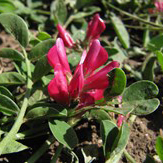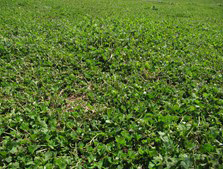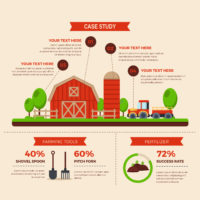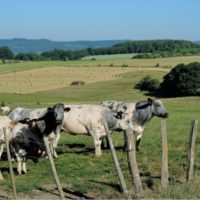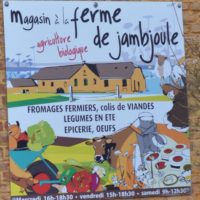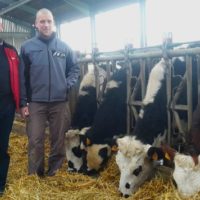Legume-based temporary grasslands & forage self sufficiency
Description
The farm Santa Barbara is located in the Nurra Plain, in North West Sardinia (Italy).
The farm shows a rich feeding and forage system. The diet of dry or pregnant ewes is based on fresh forage grazed in temporary grasslands and pastures supplemented with hay and small amounts of concentrates (sugar beetroot pulps). Lactating ewes diet is based on fresh forage grazed on annual forage crops, supplemented with lucerne hay twice a day, and concentrates according to the needs, usually corn, pulses (pea) and barley. All forages and about 90% of the supplements used in the farm are self-produced, except for sugar beetroot pulp, pea and barley that are purchased.
Temporary grasslands and management
A) Annual self-reseeding species (subclovers and medics) in mixture with cereals. Cereals are present in the mix composition to guarantee herbage production in the year of establishment. Grazing is limited in time in the first period after sowing, so that a good establishment is achieved. During winter and early spring, grazing pressure is high. Afterwards, grazing is stopped in order to allow the self-reseeding, The legume-based pasture persists for 3-4 years. These temporary grasslands are not mowed.
B) Annual cereal-legume forage mixtures (local ecotypes of Hordeum vulgare and Lolium multiflorum and Trifolium alexandrinum or T. incarnatum or T. resupinatum). Usually, grazing starts 45 days after sowing and is allowed for no longer than 5 hrs per day. It is stopped in early spring to allow the production of hay.
C) Sulla. Grazing is allowed for no more than 2 hours per day in the first growth period, and then it is increased to a maximum of 4 hours. This crop persists for 2 years and it’s exclusively used for grazing.
D) White clover. Grazing is limited in time in the summer period, then is free for animals. This clover crop is exclusively grazed and persists for about 4 years.
E) Lucerne. The crop is not grazed but only used for hay production. The meadow persists for 4-5 years.
Reason for the innovation
- Reduction of milk cost production
- Improving animal health with the use of species containing condensed tannins , i.e. sulla
- Increase farmer income
Farm description
Environment
- Soil types: shallow silt-clay soils, sub-alkaline pH
- Climate: Mediterranean climate
- Altitude: 60 m a.s.l.
- Slope: 0%
Grassland management
- Grazing : Yes
- Grazing management type: rotational grazing, combined with mowing (1 cut per year)
- Length of the grazing season: 12 months
- Forage conservation type: Hay
- Fertilisation rate: 100 kg/ha of Diammonium phosphate for mixtures, annual clovers and medics; 150 kg/ha Diammonium phosphate for lucerne; no fertilisation for sulla.
Structure
- Annual Work Unit: 2 workers
- Agricultural Area: 78 ha, 70.5 UAA:
- 48 ha, annual forage cereal mixtures
- 3.5 ha, sulla (irrigated with emergency irrigations)
- 5 ha, subterranean clovers and annual medics pastures
- 5.5 ha, white clover under irrigation
- 3.5 ha, lucerne under irrigation
- 5 ha, corn under irrigation
- Activity: dairy sheep raising (Sarda breed)
- Number of heads (LSU): 72.5
- Stocking rate referred to total farm area: 0,929 LSU per hectare
Animal performance
- Milk production: 250 l per head per year
- Meat production: 400 milk lambs per year, slaughtered 28 days after birth (carcass weight: 6-7 kg)
Why it is working
The farmers:
- are very motivated to improve the quality of their productions (milk) and to increase forage and hay self-sufficiency.
- are open to collaborations with researchers, consultants and technicians and are actively involved in projects and research activities.
Additional information
| Farming system | conventional farming |
|---|---|
| Domains of innovation | farm system, forage mixture, grazing management system, legume management – Annual legumes, legume management – Perennial legumes |
| Main types of animal | dairy sheep |
| Country | Italy |
| Product type | Farmer portrait |
| Language | English, Italian |
